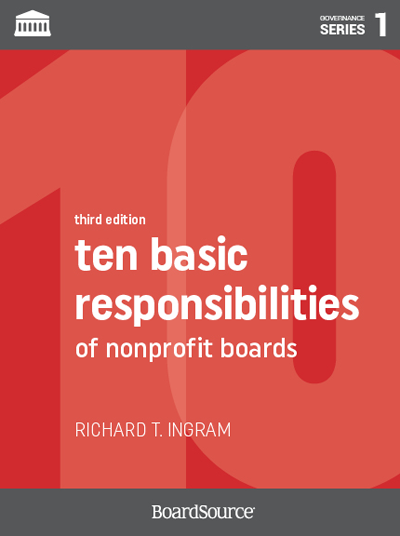Leading Nonprofit Company: Helping Charities and Organizations Achieve Their Objectives
Leading Nonprofit Company: Helping Charities and Organizations Achieve Their Objectives
Blog Article
The Value of Cooperation and Partnership for a Nonprofit Agency in Maximizing Resources and Enhancing Neighborhood Involvement
In the world of not-for-profit companies, partnership and partnership emerge as vital systems for magnifying resources and fostering neighborhood interaction. By strategically involving with various other companies, nonprofits can take advantage of shared know-how and financial backing, therefore attending to complicated social difficulties a lot more adeptly. In addition, these alliances not only boost program efficacy however likewise grow a much deeper feeling of area participation and ownership. Yet, the true potential of these joint initiatives usually remains untapped, questioning concerning how best to browse partnerships for ideal impact and sustained success. What elements add to the performance of these partnerships?
Advantages of Cooperation

Moreover, cooperation promotes development by urging the exchange of concepts and finest practices. When organizations interact, they can discover varied point of views, leading to innovative services that might not arise alone. This shared analytical technique can eventually enhance solution delivery and program end results.
Furthermore, collaborative initiatives can boost community involvement. When nonprofits companion with one an additional, they can mobilize more comprehensive support from stakeholders, including volunteers, donors, and neighborhood members. This collective involvement not just boosts visibility yet also strengthens the reliability of the taking part companies.
Structure Strategic Collaborations
Collaboration among not-for-profit companies typically results in the development of calculated collaborations, which are crucial for making the most of influence and accomplishing shared goals. These partnerships allow companies to leverage each other's strengths, boosting solution distribution and broadening outreach. By lining up goals and objectives, nonprofits can develop a synergistic result that enhances their reach and effectiveness within the neighborhood.
Building tactical partnerships needs cautious planning and shared understanding. Organizations should first identify prospective partners that share similar values and objectives, making sure compatibility in mission and vision. Developing open lines of communication fosters trust, allowing companions to go over sources, responsibilities, and assumptions transparently. Joint campaigns and routine conferences can aid keep momentum and address challenges proactively.
In addition, plainly specified functions and obligations are important for liability and success. Defining the collaboration through composed agreements can give a structure for cooperation, detailing the extent of work, performance metrics, and examination techniques. By fostering these strategic alliances, nonprofit agencies can enhance their ability to resolve community requirements, introduce solutions, and set in motion sources properly, eventually leading to a more lasting and considerable effect in the communities they offer.
Sharing Resources Efficiently
How can not-for-profit companies maximize useful source their effect through effective resource sharing? By strategically teaming up with various other organizations, nonprofits can boost their functional efficiency and expand their reach within useful site the neighborhood. Source sharing includes merging numerous assets, including funds, workers, knowledge, and centers, to attend to common objectives better.

Furthermore, leveraging each other's strengths can cultivate development. By exchanging understanding and finest methods, companies can enhance service distribution and create brand-new remedies to area obstacles. Efficient source sharing likewise cultivates a sense of unity, reinforcing the concept that cooperation is important for achieving significant social influence.
Involving the Neighborhood
What approaches can not-for-profit companies utilize to properly involve their neighborhoods? Primarily, establishing open lines of communication is essential. Utilizing numerous systems, such as social networks, newsletters, and community discussion forums, enables companies to disseminate information, obtain comments, and foster dialogue. This two-way interaction not only informs the community concerning the company's objective and tasks but additionally invites input, making community members really feel valued and entailed.
In addition, developing partnerships with neighborhood organizations can enhance outreach initiatives. nonprofit agency. Teaming up with schools, organizations, and various other nonprofits can intensify resources and develop a more extensive support network, enabling joint campaigns that reverberate with community requirements
Additionally, organizing neighborhood occasions, workshops, and volunteer possibilities can help with deeper involvement. These tasks develop a sense of belonging and motivate active involvement, making it possible for people to add to the agency's objectives while building relationships with fellow community participants.
Measuring Collective Success
Assessing the effectiveness of joint initiatives is crucial for not-for-profit companies seeking to maximize their effect. Determining collaborative success includes establishing clear, quantifiable purposes and utilizing a range of metrics to evaluate efficiency. Trick indications may consist of the variety of partnerships formed, sources shared, and the tangible outcomes accomplished via cooperation.
To effectively measure success, nonprofits should execute a Resources framework that integrates both qualitative and measurable data. Studies and interviews can offer understandings right into stakeholder contentment and the viewed value of partnerships. Furthermore, tracking metrics such as service reach, neighborhood involvement levels, and economic performance can supply a detailed view of collective efficiency.
Routine analyses ought to be carried out to identify locations of enhancement and best practices. This repetitive process not only improves responsibility but additionally promotes a society of continuous discovering within the organization - nonprofit agency. By transparently sharing evaluation results with partners and stakeholders, nonprofits can reinforce partnerships and construct count on
Inevitably, gauging collective success allows nonprofit companies to improve their strategies, assign sources more effectively, and strengthen their mission-driven efforts, leading to a greater collective impact on the communities they offer.
Verdict

In the realm of not-for-profit firms, partnership and collaboration arise as vital mechanisms for amplifying sources and promoting community involvement - nonprofit agency. By cultivating these calculated partnerships, not-for-profit firms can enhance their capacity to resolve area demands, introduce remedies, and mobilize resources properly, inevitably leading to a more lasting and considerable impact in the neighborhoods they offer
By tactically collaborating with various other organizations, nonprofits can boost their functional efficiency and extend their reach within the neighborhood.What strategies can not-for-profit agencies employ to properly involve their areas?Cooperation and partnership stand as necessary columns for not-for-profit agencies aiming to make the most of sources and boost neighborhood involvement.
Report this page